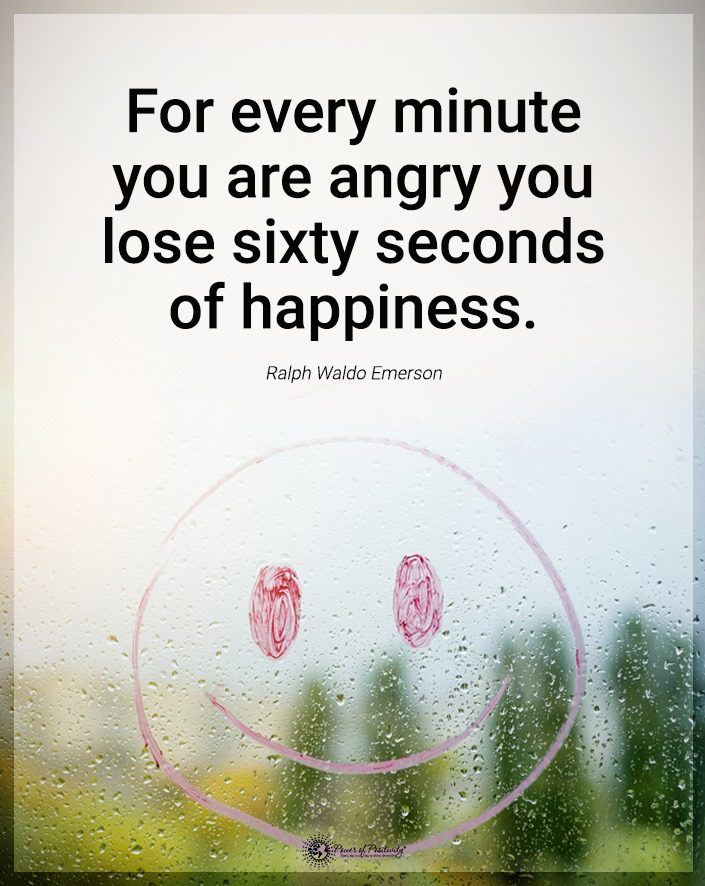Repressing emotions can happen when those emotions make us feel uncomfortable or bring up memories that we would rather leave buried. While emotional repression can help at the moment to relieve stress or allow us to move forward with our lives, it only causes more anger and turmoil in the long run.
According to Dr. Jill Ammon-Wexler, “What repressed anger does is to make its home somewhere in your body and create more stress.”
Repressed anger can especially leave us feeling hollow, stressed, and angry at the wrong targets. The problem happens when we repress this anger to either the breaking point or until it eats us alive. Allowing yourself to let go of this repressed anger is the first step to healing.
“If you carry around a lot of suppressed or repressed anger (anger you have unconsciously buried) you may lash out at people, blaming or punishing them for something someone else did a long time ago.” – Beverly Engel
6 Ways To Let Go Of Repressed Anger And Gain Control Over Your Life
1. Self-reflection Can Help Release Anger
This is the first step to releasing any repressed emotion, especially anger. We can oftentimes brush off self-reflection as something that just doesn’t work. However, being able to reflect on your emotions, thoughts, and reactions can help make releasing all of your repressed anger so much easier. First, you need to figure out how you began to repress your anger in the first place. Perhaps there was a specific event during childhood that taught you to hold your feelings in. Once you pinpoint this, you can learn how that lesson has led you to repress your feelings throughout the rest of your life.
2. Release Hidden Anger Through Forgiveness
According to Professor Robert Enright, “Our science shows that as people make the decision to forgive and follow a valid process of forgiving, then the one who forgives experiences considerable psychological relief such as reduced anger, anxiety, and depression, and an increase in self-esteem.”
This doesn’t just mean learning to forgive others. Learning to forgive yourself is as equally important in beginning to release the repressed anger inside of you. Forgiveness is a powerful tool for self-healing. When you begin to forgive the people who have harmed you in some way, you are able to release the anger that you hold inside of you. Once that anger is released, you’ll find that your mind and body can become healthier as you begin your process of healing.
3. Use Positivity Techniques as Anger Management
When your mind is thinking of negative things, you’re going to feel negative emotions! The best way to combat this, and to begin the road to recovery from repressed anger, is to use positive visualization. Instead of focusing on the people who have hurt you, focus on the people and things that bring you joy in your life, as well as purpose. Release your anger in constructive, healthy ways, like art, music, or exercise. Letting your emotions out and feeling them is an important part of letting them go.
4. Accept the Past
Trying to deny or rally against things that have already happened is a useless effort. The past is the past, and there’s nothing that can be done to change it. You can’t erase the things that happened, but you can learn to accept them and how they affect your life now. Acceptance of the past will allow you to move forward. You can’t look straight ahead if you’re always looking back! Once you learn the power of acceptance, you’ll find that your path to healing becomes much more straightforward.
5. Understand the Other Person’s Point of View
When you began your self-reflection, you may have begun to realize that you hold repressed anger because of someone else. This is a good time to try and reflect on their point of view. Understanding where someone else is coming from can help you process your anger, rather than letting it fester inside of you. Of course, this is only useful if the anger comes from a differing point of view, rather than an expression of violence. In cases like this, it’s important to know that someone’s violence against you was not your fault. Being able to release yourself from the blame can help you move past your anger.
6. Let Go of Anger by Relinquishing Control
Sure, you can control certain things about your life – who you interact with, where you work, how you spend your time, etc. But in the long run, life is going to happen and the most any of us can do is brace ourselves for the ride. According to Dr. Amy Johnson, “I’ve noticed that things go much more smoothly when I give up control—when I allow them to happen instead of making them happen. “
You can’t control other people’s actions. If an ex-partner broke your trust and cheated on you, being able to accept that there was nothing you could do to control their actions can help release your repressed anger at them for hurting you. Once that anger is released, you can start to heal from the incident.
Repressed emotions can cause stress, depression, and anxiety. Repressed anger is no exception! However, it is possible to learn to release that anger. Once you have the tools to work through your own personal healing journey, your body and mind will be at peace. You may even find that your relationships with other people, be they romantic, platonic, or familial, have grown stronger than ever now that you don’t have that anger hanging over your head.
6. Behavior Modification to Manage Your Anger
How often have you told your children that they need to modify their behavior? Well, the same thing works with adults. When you change your thought processes, it will automatically change your actions. Have you ever had to go outside and count to ten before disciplining your kids?
The same principles apply when it comes to anger issues. When you have stress-management techniques you can turn to during times of frustration; you can learn to release the rage you feel and calm yourself.
7. Meditation and Prayer
You can conquer deep emotional work when you delve into prayer and meditation. It’s very beneficial because both practices help you focus on the present moment and alter your thoughts. So many people become distracted by the past, which hinders them in the here and now.
During these calming moments when you’re trying to recenter yourself, there’s a lot of self-healing that takes place. Once you get the hang of these practices, you can learn how to calm your feelings of both anger and resentment. A positive mindset can do wonders, and prayer and meditation can help you achieve it.
8. Creative Visualization
All those self-imposing and restricting thoughts can be released when you utilize visualization. Do you have rage from your past that festers at any given time? Try using a visualization technique to clear these feelings.
Have you ever used a tea kettle to boil water for tea or instant soups? Picture the kettle boiling on your stove. When it starts whistling because it’s screaming hot, this is a good visualization for the rage happening on the inside. Now, turn the kettle off, and the water inside will begin to cool.
As the water cools, this is indicative of your inner thermostat calming. Trying techniques like this can help you relax and bring your emotional temperature back to normal. No one wants to walk around red hot from anger.
9. Journaling for Releasing Your Anger
When you feel irritation inside, you must let it go. Journaling is a beautiful place to start. Getting those feelings down on paper can release them from your innermost being. Some people find it beneficial to just write all their thoughts and feelings down on paper, but others like to write short stories that parallel their emotions.
10. Managing Your Thoughts
According to News Week, the average human being has more than 6,000 random thoughts each day. Your thought processes help to shape your emotional response. Assume that you see something that you feel is frightening.
Your brain registers this event and gives you a specific emotional response to what you’re experiencing. However, when you change how you view things, you’re altering your emotional reaction to it. So, when you stop seeing a situation as rage-inducing, your thought process will alter around your perception.
11. Take A Time Out
Taking a time out is a great way to reset your brain and focus on something positive. When you set your children in time out, you want them to stop, think about what they’ve done, and change their emotional response. When you distract your mind, it helps to make things clearer.
Even if you’ve buried your rage deep inside, there will be times when it comes boiling to the surface. These little segments of “me time” can help you put things into perspective.
12. Talk to Someone About It
If you want to let go of vehemence deep inside, it’s best to get it out by talking to someone. This person can be a therapist, a trusted friend, or the person who offended you. The more you bury it and refuse to speak about it, the more powerful it becomes.
Burying hurts and frustrations only mean that you will have to deal with them another day. Additionally, you can be like a time bomb with rage waiting for someone to detonate you. Get it out, deal with it, and move on.
13. Uses Positive Affirmations
There are a lot of negativities that surround you every day. When you ingest these toxic things, it acts as a large spoon that stirs the pot. For instance, you go to work, and your boss writes you up for a minor infraction. This negative thing sets your mood off, making you see red.
It’s easy to let things that are buried come to the surface during a storm. Remember, when the tide rolls in on the ocean, it brings seaweed, fish, rocks, and shells with it. Essentially everything you have hidden will roll to the surface when things get shaken up. The good news is that you can combat this with some positive affirmations.
You can read or recite affirmations each day to change your mindset. It helps you flush inner negativities to the curb and release the anger that’s holding you hostage.
14. Release Fury Mindfully
Many times, anger is caused by a bruised ego. Maybe you lost the love of your life, a job, or someone said or did something that hurt you deeply. You’re having trouble letting go of the feelings, so this pent-up negativity warrants a ceremonial release.
You can do things like write the problem on a balloon and set it free into the sky. You can watch your frustrations fade into the vast blue above as you do this. You can try writing the person’s name and offense on a card and burning it. Find a way to release the anger by doing these ceremonial acts mindfully.
15. Use Laughter to Let go of Anger and Bitterness
Laughter is very healing. When was the last time that you laughed till your stomach hurt? You’ve heard laughter is the best medicine, but did you know there’s scientific evidence to back these theories?
According to a study conducted by Massachusetts General Hospital and posted on the National Library of Medicine, they used humor on cancer patients to see how it affected them. They found humor lightened the mood, improved the patients’ outlook, and eased their pain.
Since anger on the inside of you can eat and gnaw at your very soul like cancer, it stands to reason that humor can also work for you. The quicker you nip these anger issues, the less likely they are to turn into bitterness.
Final Thoughts on Letting Go of Your Anger
Being furious on the inside can steal your happiness. It will eat at your soul, and it can shatter your mind’s peace. When you allow situations and people to make you angry, you give them control over your life.
By doing some of the actions listed above, you can learn to forgive, put your fury in its place, and start walking with a positive mindset. Be open-minded and find some of these activities that you think will help. Don’t be afraid to try many until you find the one that works.
















 Community
Community

